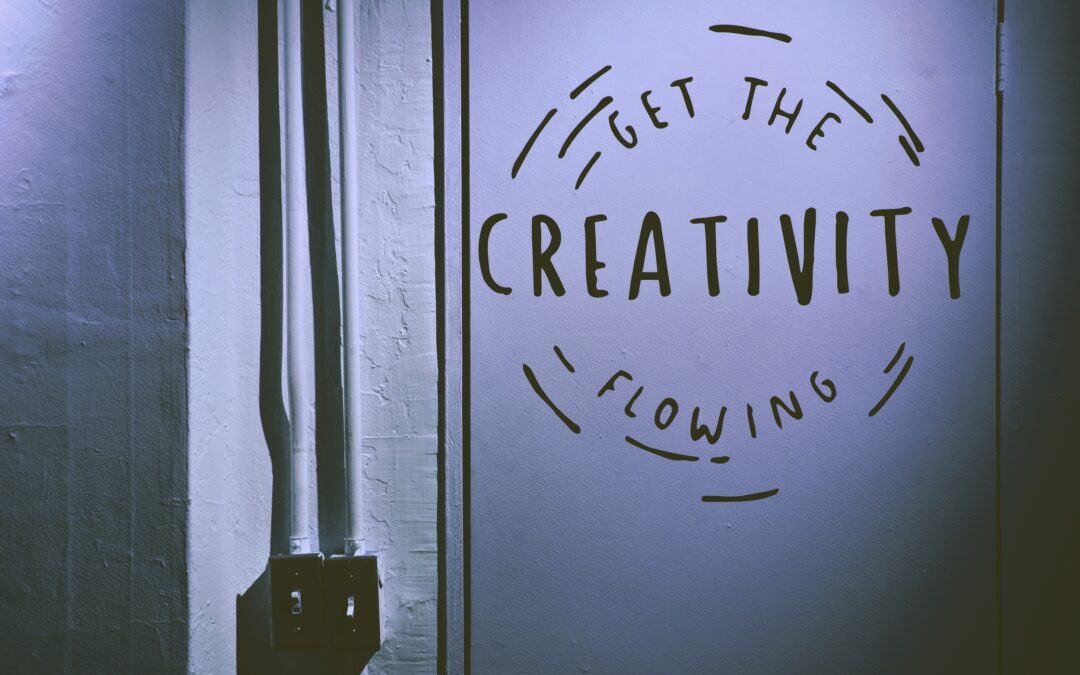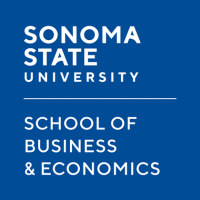
by Robyn Bolton | Nov 2, 2022 | Innovation, Leadership
If you heard it once, you heard it a thousand times:
- Big companies can’t innovate
- We need to innovate before we get too big and slow
- Startups are innovative. Big companies are dinosaurs. They can’t innovate.
And yet you persevere because you know the truth:
Big companies CAN innovate.
They CHOOSE not to.
Using Innovation to drive growth is a choice.
Just like choosing to grow through acquisition or expansion into new markets is a choice.
All those choices are complex, uncertain, and risky. In fact:
Hold on. The odds of failure are the same!
All three growth drivers have similar failure rates, but no one says, “Big companies can’t acquire things” or “Big companies can’t expand into new markets.”
We expect big companies to engage in acquisitions and market expansion.
Failed acquisitions and market expansions prove us (or at least our expectations) wrong. Because we don’t like being wrong, we study our failures so that we can change, improve, and increase our odds of success next time.
We expect big companies to fail at innovation.
In this case, failure proves us right. We love being right, so we shrug and say, “Big companies can’t innovate.”
We let big companies off the hook.
Why are our expectations so different?
Since the dawn of commerce, businesses engaged in innovation, acquisitions, and market expansion. But innovation is different from M&A and market expansion in three fundamental ways:
- Innovation is “new” – Even though businesses have engaged in innovation, acquisitions, and market expansion since the very earliest days of commerce, innovation only recently became a topic worthy of discussion, study, and investment. In fact, it wasn’t until the 1960s that Innovation was recognized as worthy of research and deliberate investment.
- Innovation starts small – Unlike acquisitions and new markets that can be easily sized and forecasted, in the early days of an innovation, it’s hard to know how big it could be.
- Innovation takes time – Innovation doesn’t come with a predictable launch date. Even its possible launch date is usually 3 to 5 years away, unlike acquisition closing dates that are often within a year.
What can we do about this?
We can’t change what innovation is (new, small, and slow at the start), but we can change our expectations.
Finish the sentence – “Big companies can’t innovate” absolves companies of the responsibility to make a good-faith effort to try to innovate by making their struggles an unavoidable consequence of their size. But it’s not inevitable, and continuing the sentence proves it. Saying “Big companies can’t innovate because…” forces people to acknowledge the root causes of companies’ innovation struggles. In many ways, this was the great A-HA! of The Innovator’s Dilemma: Big companies can’t innovate because their focus on providing better (and more expensive) solutions to their best customers results in them ceding the low-end of the market and non-consumers to other companies.
Be honest – Once you’ve identified the root cause, you can choose to do something different (and get different results) or do everything the same (and get the same results). If you choose to keep doing the same things in the same ways, that’s fine. Own the decision.
Change your choice. Change your expectations – If you do choose to do things differently, address the root causes, and resolve the barriers, then walk the talk. Stop expecting innovation to fail and start expecting it to be as successful as your acquisition and market expansion efforts. Stop investing two people and $10 in innovation and start investing the same quantity and quality of resources as you invest and other growth efforts.
The first step in change is admitting that change is needed. When we accept that “big companies can’t innovate” simply because they’re big, we absolve them of their responsibility to follow through on proclamations and strategies about the importance of innovation as a strategic driver of growth.
It’s time to acknowledge that innovation (or lack thereof) is a choice and expect companies to own that choice and act and invest accordingly.
After all, would it be great to stop persevering and start innovating?

by Robyn Bolton | Oct 26, 2022 | Innovation, Stories & Examples, Tips, Tricks, & Tools
Innovation thrives within constraints.
Constraints create the need for questions, creative thinking, and experiments.
But as real as constraints are and as helpful as they can be, don’t simply accept them. Instead, question them, push on them, and explore around them.
But first, find the horse’s a**
How Ancient Rome influenced the design of the Space Shuttle
In 1974, Thiokol, an aerospace and chemical manufacturing company, won the contract to build the solid rocket boosters (SRBs) for the Space Shuttle. The SRBs were to be built in a factory in Utah and transported to the launch site via train.
The train route ran through a mountain tunnel that was just barely wider than the tracks.
The standard width of railroad tracks (distance between the rails or the railroad gauge) in the US is 4 feet, 8.5 inches which means that Thiokol’s engineers needed to design SRBs that could fit through a tunnel that was slightly wider than 4 feet 8.5 inches.
4 feet 8.5 inches wide is a constraint. But where did such an oddly specific constraint come from?
The designers and builders of America’s first railroads were the same people and companies that built England’s tramways. Using the existing tramways tools and equipment to build railroads was more efficient and cost-effective, so railroads ended up with the same gauge as tramways – 4 feet 8.5 inches.
The designers and builders of England’s tramways were the same businesses that, for centuries, built wagons. Wanting to use their existing tools and equipment (it was more efficient and cost-effective, after all), the wagon builders built tramways with the exact distance between the rails as wagons had between wheels – 4 feet 8.5 inches.
Wagon wheels were 4 feet 8.5 inches apart to fit into the well-worn grooves in most old European roads. The Romans built those roads, and Roman chariots made those grooves, and a horses pulled those chariots, and the width of a horses was, you guessed it, 4 feet 8.5 inches.
To recap – the width of a horses’ a** (approximately 4 feet 8.5 inches) determined the distance between wheels on the Roman chariots that wore grooves into ancient roads. Those grooves ultimately dictated the width of wagon wheels, tramways, railroad ties, a mountain tunnel, and the Space Shuttle’s SRBs.
How to find the horse’s a**
When you understand the origin of a constraint, aka find the horse’s a***, it’s easier to find ways around it or to accept and work with it. You can also suddenly understand and even anticipate people’s reactions when you challenge the constraints.
Here’s how you do it – when someone offers a constraint:
- Thank them for being honest with you and for helping you work more efficiently
- Find the horse’s a** by asking questions to understand the constraint – why it exists, what it protects, the risk of ignoring it, who enforces it, and what happened to the last person who challenged it.
- Find your degrees of freedom by paying attention to their answers and how they give them. Do they roll their eyes in knowing exasperation? Shrug their shoulders in resignation? Become animated and dogmatic, agitated that someone would question something so obvious?
How to use the horse’s a** to innovate
You must do all three steps because stopping short of step 3 stops creativity in its tracks.
If you stop after Step 1 (which most people do), you only know the constraint, and you’ll probably be tempted to take it as fixed. But maybe it’s not. Perhaps it’s just a habit or heuristic waiting to be challenged.
If you do all three steps, however, you learn tons of information about the constraint, how people feel about it, and the data and evidence that could nudge or even eliminate it.
At the very least, you’ll understand the horse’s a** driving your company’s decisions.
Endnotes:
- To be very clear, the origin of the constraint is the horse’s a**. The person telling you about the constraint is NOT the horse’s a**.
- The truth is never as simple as the story and railroads used to come in different gauges. For a deeper dive into this “more true than not” story (and an alternative theory that it was the North’s triumph in the Civil War that influenced the design of the SRBs, click here

by Robyn Bolton | Oct 11, 2022 | Customer Centricity, Innovation, Tips, Tricks, & Tools
Q: How might we brainstorm new ideas to serve our customers better?
A: Have a brainstorming session that starts with “How Might We help customers [Job to be Done/problem]?”
If only it were that simple.
How Might We (HMW) is an incredible tool (not BS, as some would assert), but we misuse it. We focus too much on the “we” and not enough on the “might.”
Might > We
HMW was first used to prompt people to be “wildly creative while simultaneously leveraging [company’s] innate strengths.”
IDEO popularized the prompt as a way to solve “wicked problems” – problems so complex that there is no right or wrong answer.
In both of these cases, the assumption was that the word “might” would free people from the shackles of today’s thinking and constraints and give people permission to dream without fear of judgment and reality.
“We” kept ideas tethered to the reality of the company’s “innate strengths,” providing a modicum of comfort to executives worried that the session wouldn’t result in anything useful and would, therefore, be a waste of time.
We > Might
Alas, as time went on and HMW became more popular, we lost sight of its intent (prompt wildly creative thinking about wicked problems) and twisted it to our purposes.
- We end the HMW sentence with our problems (e.g., HMW cut costs by getting more customers to use self-service tools?).
- We use it to brainstorm solutions to things that aren’t even problems (e.g., HMW eliminate all customer service options that aren’t self-serve?)
- We mentally replace “might” with “will” so we can emerge from brainstorming sessions with a tactical implementation plan.
How Might Can YOU Fix HMW?
If you’re not getting creative, radical, or unexpected ideas from your brainstorming sessions, you have an HMW problem.
As a result, continuing to use HMW as a tool to prompt creative, radical, or unexpected ideas is the definition of insanity. And you are not insane,
Instead, mix it up.
Use different words to articulate the original intent of HMW.
How would we solve this problem if the answer to every request is YES?
Innovation thrives within constraints. Brainstorming doesn’t.
Even when you tell people not to constrain themselves, even implore them to value “quantity over quality,” you still get more “safe” ideas rather than more “crazy” ideas.
Do more than tell. Make a world without constraints real. Explicitly remove all the constraints people throw at ideas by creating a world of infinite money, people, capabilities, willingness, appetite for risk, and executive support. Doing this removes the dreaded “but” because there is no “but we don’t have the money/people/capabilities” or “but management will never go for it” and creates space for “and.”
What would we ask for if we were guaranteed a YES to only ONE request?
This question is often asked at the end of a brainstorm to prioritize ideas. But it’s equally helpful to ask it at the beginning.
This question shifts our mindset from “the bosses will never say yes, so I won’t even mention it” to “the bosses will say yes to only one thing, so it better be great!” It pulls people off the sidelines and reveals what people believe to be the most critical element of a solution. It drives passionate engagement amongst the whole team and acts as a springboard to the next brainstorm – How Might We use (what they said yes to) to solve (customers’ Jobs to be Done/problem)?
How would we solve the problem if the answer to every request is NO?
This one is a bit risky.
Some people will throw their hands in the air, declare the exercise a waste of time and effort, and collapse into a demotivated blob of resignation.
Some people will feel free. As Seth Godin wrote about a journal that promises to reject every single person who submits an article, “The absurdity of it is the point. Submitting to them feels effortless and without a lot of drama, because you know you’re going to get rejected. So instead of becoming attached to the outcome, you can simply focus on the work.”
For others, this will summon their inner rebel, the part of themselves that wants to stick it to the man, prove the doubters wrong, and unleash a great “I told you so” upon the world. To them, “No” is the start of the conversation, not the end. It fires them up to do their best work.
Don’t invite the first group of people to the brainstorm.
Definitely invite the other two groups.
How Might Will/Do YOU Fix HMW?
If you want something different, you need to do something different.
Start your next brainstorm with a new variation on the old HMW prompt.
How do people react? Does it lead to more creative or more “safe” ideas?
How might we adjust to do even better next time?

by Robyn Bolton | Oct 5, 2022 | Customer Centricity, Innovation, Stories & Examples, Tips, Tricks, & Tools
Being the smart innovator (and businessperson) you are, you know it’s important to talk to customers. You also know it’s important to listen to them.
It’s also important to ignore your customers.
(Sometimes)
Customers will tell you what the problem is. If you stay curious and ask follow-up questions (Why? and Tell me more), they’ll tell you why it’s a problem and the root cause. You should definitely listen to this information.
Customers will also tell you how to fix the problem. You should definitely ignore this information.
To understand why, let me tell you a story.
Eye contact is a problem
Years ago, two friends and I took a day trip to Maine. It was late in Fall, and many lobster shacks dotting the coast were closed for the season. We found one still open and settled in for lunch.
Now, I’m a reasonably adventurous eater. I’ll try almost anything once (but not try fried tarantulas). However, I have one rule – I do not want to make eye contact with my food.
Knowing that lobsters are traditionally served with their heads still attached, I braced for the inevitable. As the waitress turned to me, I placed the same order as my friends but with a tiny special request. “I’ll have the lobster, but please remove its head.”
You know that scene in movies when the record scratches, the room falls silent, and everyone stops everything they’re doing to stare at the person who made an offending comment? Yeah, that’s precisely what happened when I asked for the head to be removed.
The waitress was horrified,” Why? That’s where all the best stuff is!”
“I don’t like making eye contact with my food,” I replied.
She pursed her lips, jotted down my request, and walked away.
A short time later, our lunch was served. My friends received their lobsters as God (or the chef) intended, head still attached. Then, with great fanfare, my lobster arrived.
Its head was still attached.
But we did not make eye contact.
Placed over the lobster’s eyes were two olives, connected by a broken toothpick and attached to the lobster’s “ears” by two more toothpicks.
The chef was offended by my request to remove the lobster’s head. But, because he understood why I wanted the head removed, he created a solution that would work for both of us – lobster-sized olive sunglasses.
Are you removing the head or making sunglasses?
Customers, like me, are experts in problems. We know what the problems are, why they’re problems, and what solutions work and what don’t. So, if you ask us what we want, we’ll give you the solution we know – remove the head.
Innovators, like you and the chef, are experts in solutions. You know what’s possible, see the trade-offs, and anticipate the consequences of various choices. You also take great pride in your work and expertise, so you’re not going to give someone a sub-par solution simply because they asked for it. You’re going to provide them with olive sunglasses.
Next time you talk to customers, stay curious, ask open-ended questions, ask follow-up questions, and build a deep understanding of their problems. Then ignore their ideas and suggestions. They’ll only stand in the way of your olive sunglasses.

by Robyn Bolton | Oct 3, 2022 | Speaking




